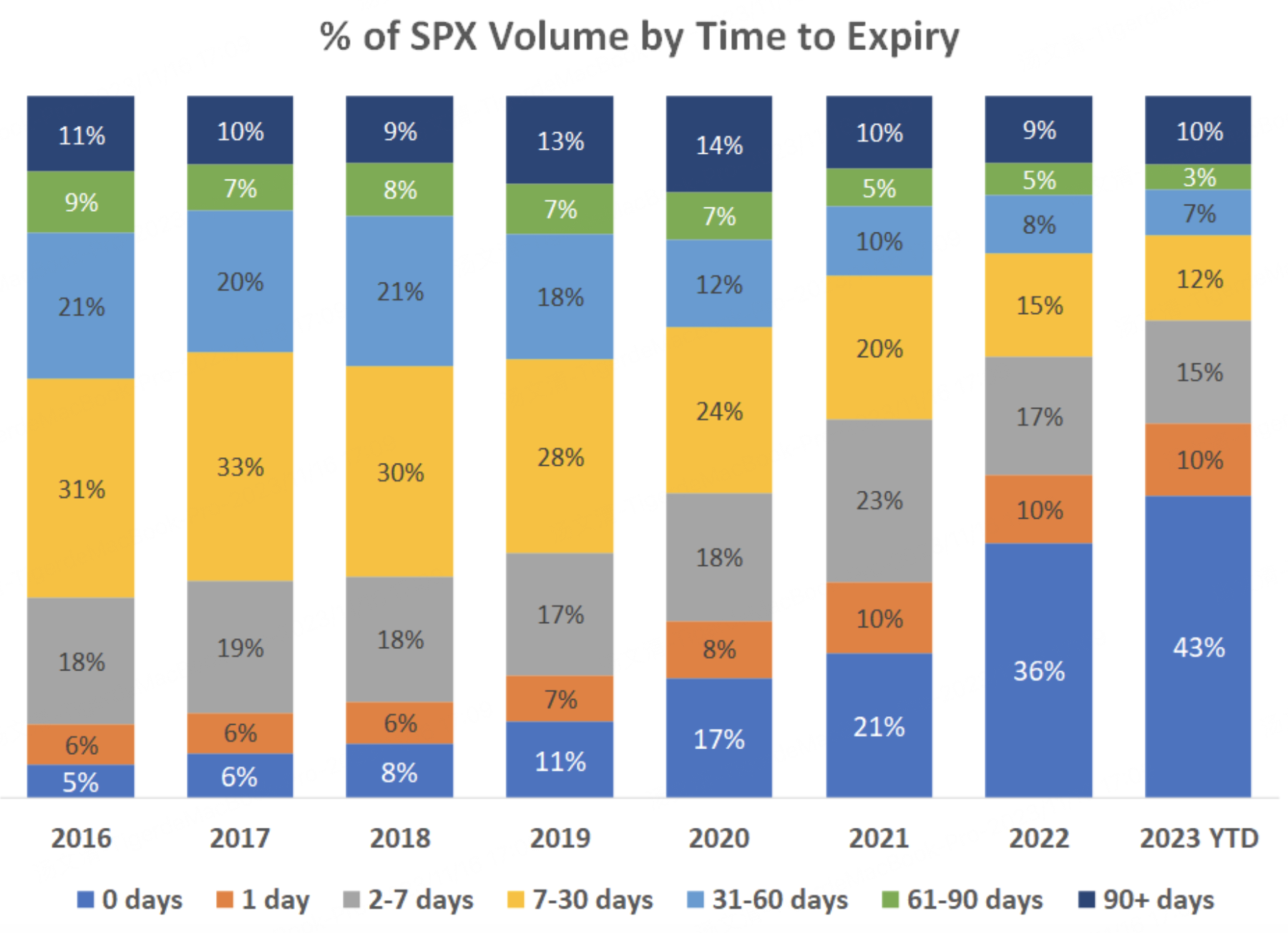0DTE strategy exploration 1: How much can 0DTE options earn when the market crashes?
Zero-day expiration options (0 DTE) are options that expire on the day of the trade. The rising volume of zero-date options proves that there is a demand in financial markets for additional flexibility in day trading.
The 0 DTE option strategy can be more flexible in a specific market situation. However, the cost and risk of 0 DTE options can be higher compared to weekly and monthly expiration options.
Special commend: How to achieve an 8%* annualized yield on your Tiger Vault Fund?
0 DTE Options: Select strategy and strike price
The implied volatility of 0 DTE options is on average higher than the implied volatility of regular monthly options. This means that, all else being equal, buyers of 0 DTE options pay an extra premium for the option.
In addition, the gamma risk associated with 0 DTE options may be significantly higher than the gamma risk associated with monthly options.
Therefore, traders should carefully analyze the overall value of 0 DTE options before making trading judgments. However, for those who want to try the 0 DTE options strategy, there is some additional interesting research that can help improve the trading method.
The only difference between 0 DTE options and regular weekly or monthly options is the shortened time before expiration. In theory, this means that all trading strategies for normal options can potentially be applied to 0 DTE options.
However, 0 DTE options are not used in large numbers for sophisticated trading methods. Instead, most market participants use options on index ETFs such as the $SPDR S&P 500 ETF Trust(SPY)$ to invest in one-day volatility in the market, as SPY offers 0 DTE options per trading day.
In most cases, these options are used to concentrate directional risk through naked call or naked put trades. For example, buying out-of-the-money call options to try to profit from a big rise in the S&P 500.
This approach can yield huge returns with minimal risk. However, this is also a low-probability approach, and the accumulation of a large number of small losses will eventually lead to large capital losses.
If you want to gain from naked buying anyway, out-of-the-money options may offer the strongest return in terms of risk and reward. Of these options, the 25 delta option seems to be the most attractive.
The Tastylive study examines the potential risks and rewards of buying out-of-the-money put options when the market is down 1-3%. To assess which put options are the best, they analyze the relative performance of 25-delta, 10-delta, and 5-delta puts.
When the market is down 3%, low delta puts can generate huge gains. For example, when the market falls by 3%, the profit of the 5 delta put option is 25 times the initial price of the option position.
However, 3% moves in the market are relatively rare, occurring only around 1% during the study period.
On the other hand, when the market falls by an average of 3%, a 25 delta put option generates a profit of almost 10 times the initial price of the option position. But 25 delta puts can generate profits on days when the market moves by only 2% or even 1%. In contrast, when the market moves just 1% or 2%, a 5-delta put option results in a loss.
The chart below illustrates the potential risks and rewards associated with the three price outs (5-delta, 10-delta, and 25-delta).
The above data suggests that buy-side investors in bearish trades may be better off using 25-delta puts when considering optimizing the risk-to-return ratio.
Disclaimer: Investing carries risk. This is not financial advice. The above content should not be regarded as an offer, recommendation, or solicitation on acquiring or disposing of any financial products, any associated discussions, comments, or posts by author or other users should not be considered as such either. It is solely for general information purpose only, which does not consider your own investment objectives, financial situations or needs. TTM assumes no responsibility or warranty for the accuracy and completeness of the information, investors should do their own research and may seek professional advice before investing.
- Tom Chow·2023-11-17niceLikeReport


